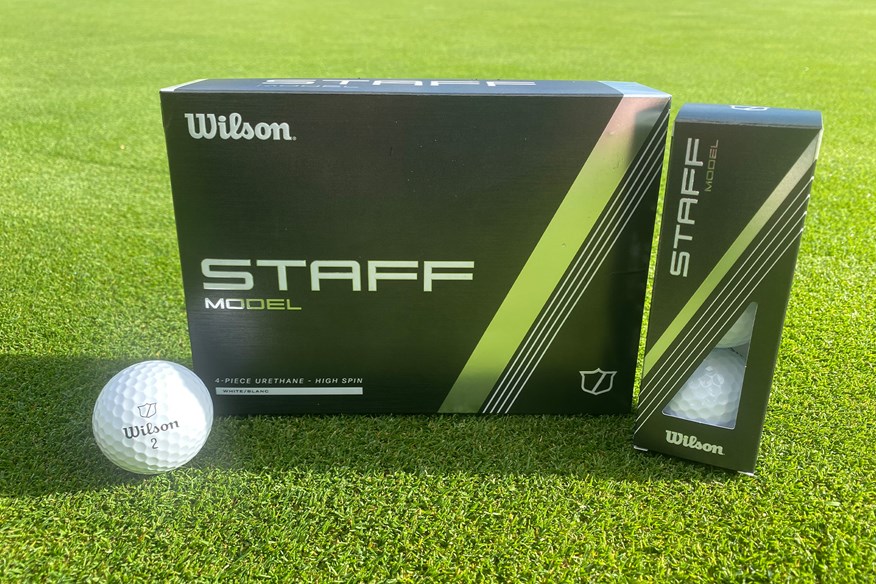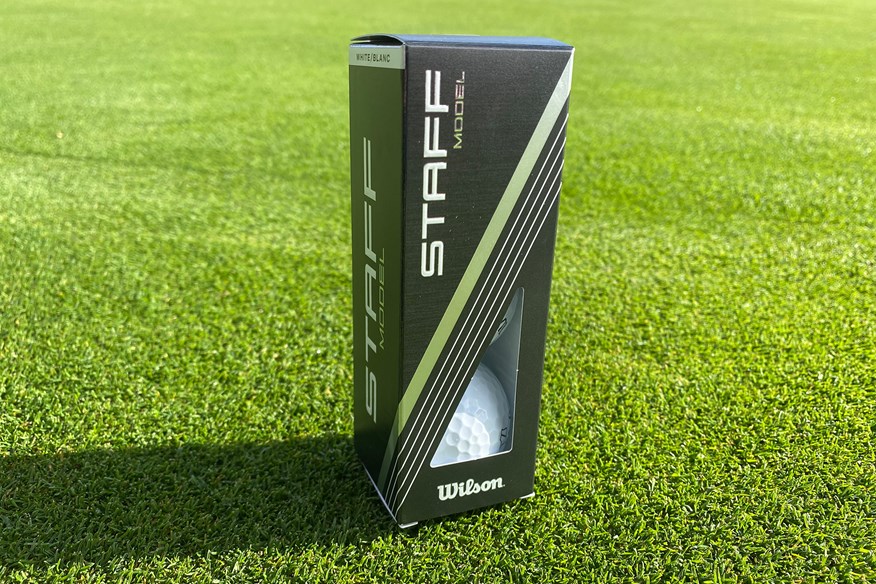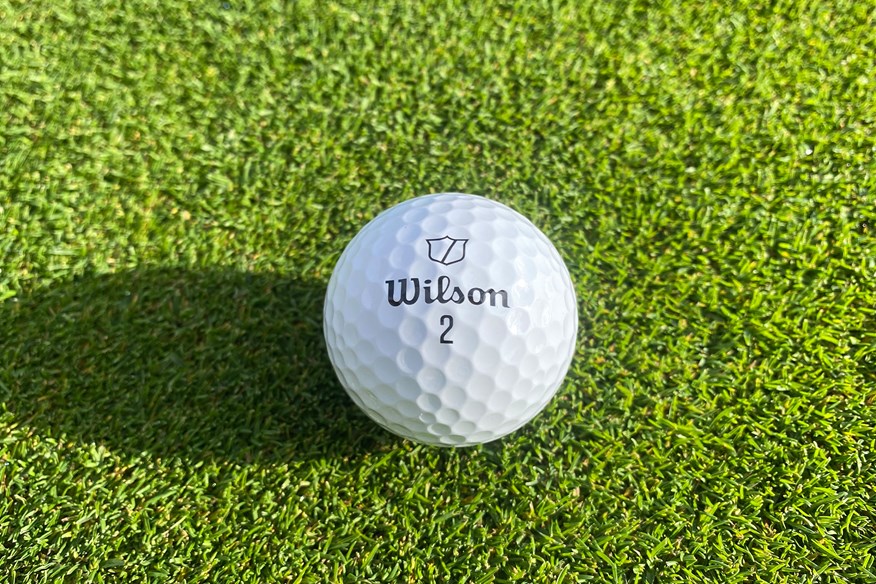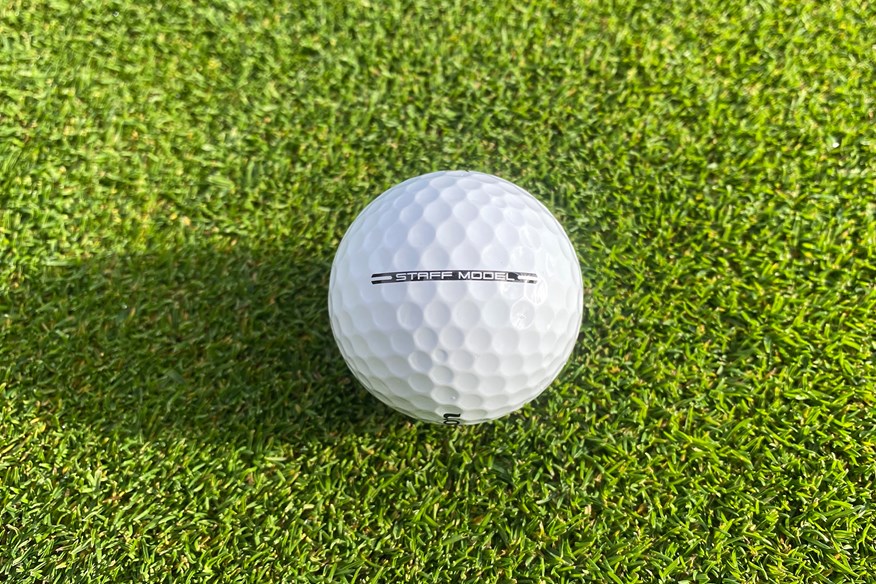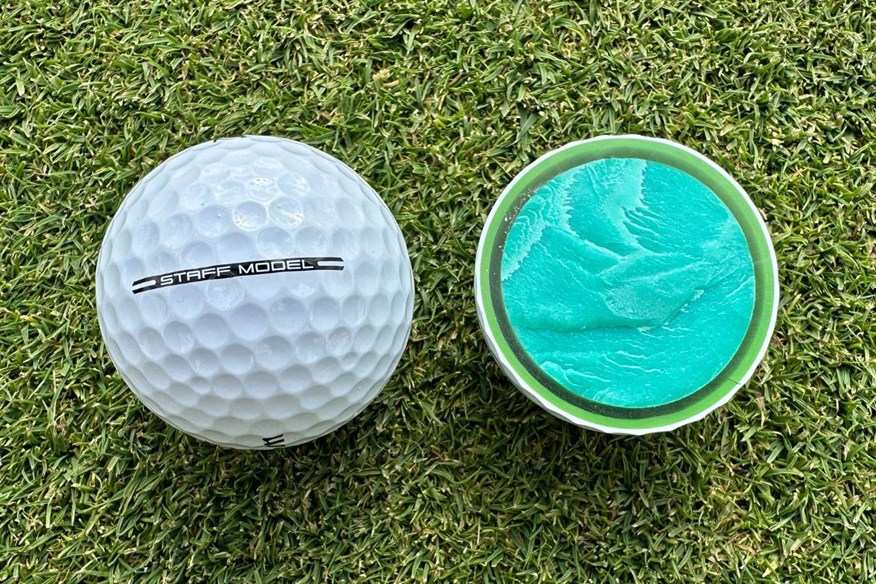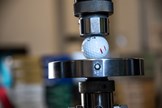It’s time to stop buying ‘soft’ golf balls – and our test proves why
Published:
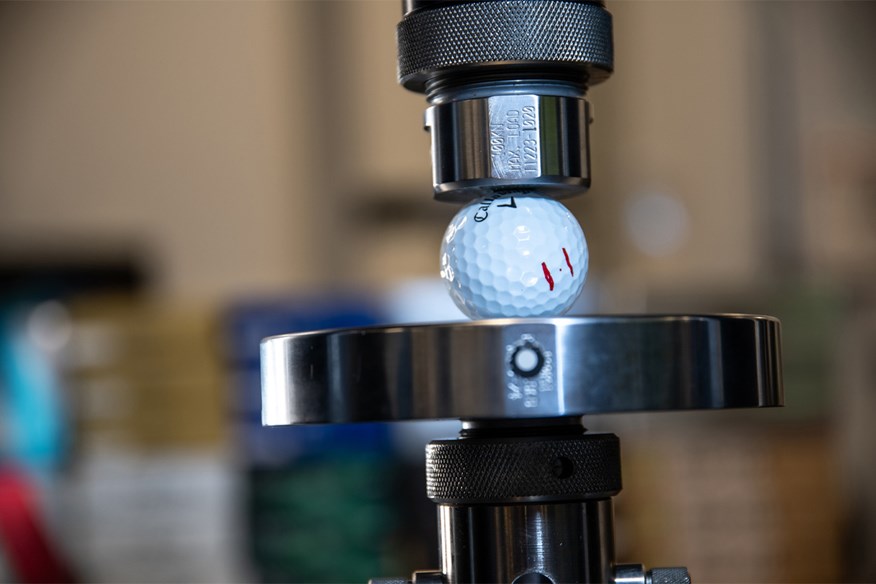
Soft golf balls have been marketed as easy to launch and ideal for slower swings. But our robot test shows they’re shorter off the tee and lower spinning with wedges. Here’s why softer isn’t better – and what you should play instead.
For decades, golfers have been told that soft is better when it comes to golf balls.
“Easier to compress”. “Extra distance for less effort”. “More forgiving”. “Better for slower swings”.
It all sounds great – but our robot test shows it’s simply not true. In fact, the softest balls in our 2025 test were the shortest with the driver – regardless of swing speed – and the lowest spinning with a wedge.
Let’s dive into what makes a golf ball soft, why the performance of soft balls doesn’t live up to the marketing hype, and how you can get the feel you want from a golf ball without compromising on performance.
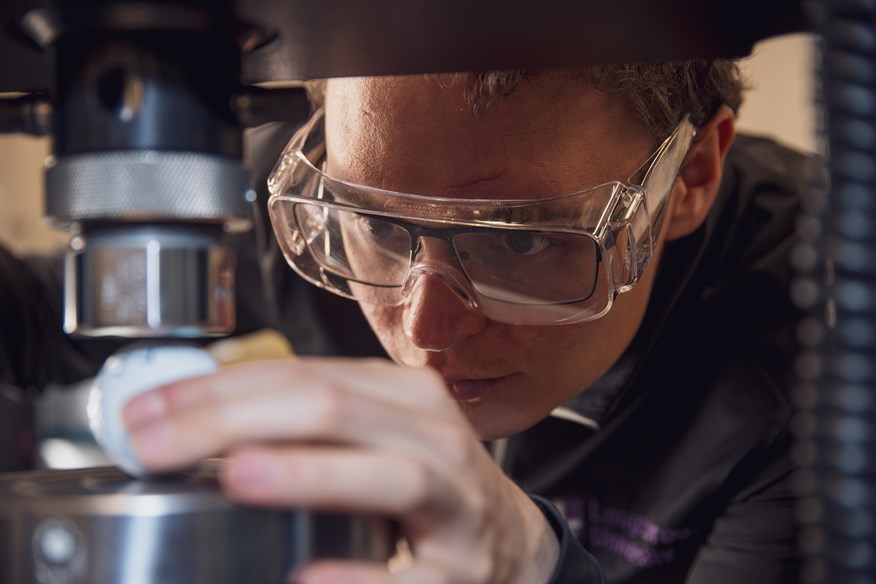
What makes a golf ball soft?
Compression is a measure of how much a ball deforms (or squashes) at impact, usually rated between 30-120. The lower the rating, the softer the ball, and the more it will be squashed upon impact. A higher rating indicates a firmer construction that won’t deform as easily.
Golf balls marketed as soft typically have a low compression rating. There’s no hard and fast rule, but balls with a compression of 80 or below would typically be considered soft.
How we tested the golf balls
We put 62 golf balls through their paces with a $100,000 swing robot – the same technology used by manufacturers when developing new clubs and equipment. A robot guarantees consistency that even elite players can’t match, so the only variable was the ball itself.
We tested every ball across five different shot types:
- 114mph driver – PGA Tour average
- 93mph driver – LPGA Tour and typical male club golfer
- 78mph driver – average female club golfer
- 7-iron – 80mph for club golfer average
- 56° wedge – hitting a 40-yard pitch shot
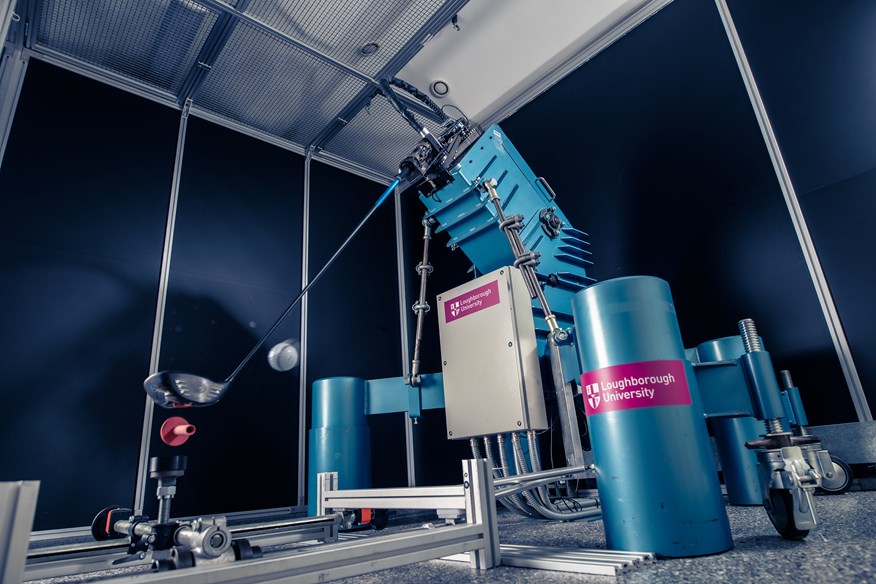
The old myth – and why it’s hurting your game
Conventional thinking was that slower swing speeds needed lower compression golf balls as they lacked the force required to compress a firmer ball.
But our data proved this simply isn’t the case.
- The Pinnacle Soft (35 compression) was the softest ball in the test and delivered the shortest carry distance at all three driver swing speeds.
- The Srixon UltiSoft (42 compression) was the second softest ball in the test – and the second shortest at all three driver speeds.
- At 78mph, the swing speed where soft balls are supposed to shine, they were still bottom. In fact, you’re giving up 8 yards of driver carry distance by playing one of these balls.
- At 93mph, you’re giving up 11 yards of driver carry distance.
- If you swing at 114mph, the softest balls will cost you as much as 15 yards of driver carry distance compared to what you could get from a firmer ball.
The conclusion is clear: softer doesn’t mean longer, at any swing speed.
And distance isn’t the only problem
It wasn’t just driver distance where soft golf balls underperformed. Low-compression balls also struggled badly for spin on the 40-yard pitch shot.
- Both the Pinnacle Soft and Srixon UltiSoft ranked in the bottom five for wedge backspin.
- No ball with a compression of 80 or below ranked in the top half for wedge spin.
That means softer balls not only go shorter off the tee, they’re also harder to stop into the green.
The only benefit to soft golf balls
Some of the soft golf balls we tested produced strong 7-iron carry distance. The Callaway Supersoft (41 compression) and TaylorMade SpeedSoft (50) ranked second and third for carry distance with a 7-iron. The Wilson Duo Soft (55) and Titleist TruFeel (68) also made the top 10.
But there’s a catch: they all spun less than average. A yard or two extra with a 7-iron isn’t much help if the ball won’t stop on the green – or if you’re 15 yards further back with your driver.
And the two very softest balls – the Pinnacle Soft and Srixon UltiSoft – didn’t even deliver standout iron distance. Both were mid-to-bottom performers, with below-average spin.
Personally, I would never suggest choosing a golf ball based on the fact that it flies a yard or two longer with a 7-iron – especially when it delivers low spin rates with irons and wedges, and poor driver distance.
But what about feel?
This is the last argument for soft balls: “I just like how they feel.” Fair enough – but here’s the truth.
- Feel comes from the cover more than the compression. A urethane cover feels softer and spins better than surlyn, regardless of compression.
- Putters matter. It’s on the green where golfers tend to notice the biggest difference in the sound and feel of a golf ball, and most of the best putters these days have face inserts that soften feel, which means firmer balls don’t feel harsh.
- Premium balls aren’t actually hard. Today’s multi-layer urethane balls pair a firm inner core with a softer outer layer, so you can get explosive distance and higher spin from a firmer compression, with the softer sensation many golfers prefer.
So what should you play?
Forget about chasing a softer feel. Instead, focus on a ball that:
- Maximises your driver distance (because hitting wedges into greens beats hitting 6-irons).
- Gives you enough iron and wedge spin to stop the ball where you want.
- Fits your budget without sacrificing performance.
The bottom line: don’t fall for the “soft” trap. If you’re serious about playing better golf, pick a ball that’s designed to perform, not just feel nice in your hands.
TG‘s golf ball expert James Hogg recommends the Callaway Chrome Tour (113) and Wilson Staff Model (112) as two high-performing balls that feel softer than their compression would suggest.
“Chrome Tour is the complete package, and definitely a golf ball you have to consider if you want a premium, tour-level golf ball that’s fast and long off the tee, with good iron game and short game spin and control,” he says. “The Chrome Tour is extremely popular on Tour, and it’s clear to see why.”
At the 114mph test speed, the Callaway Chrome Tour was the fastest and longest golf ball of the entire test, being the only golf ball out of all 62 to exceed 275 yards of carry. It’s a similar story at 93mph, being the longest golf ball off the tee of all 62 tested.
Gold medal for driver performance
Longest golf ball
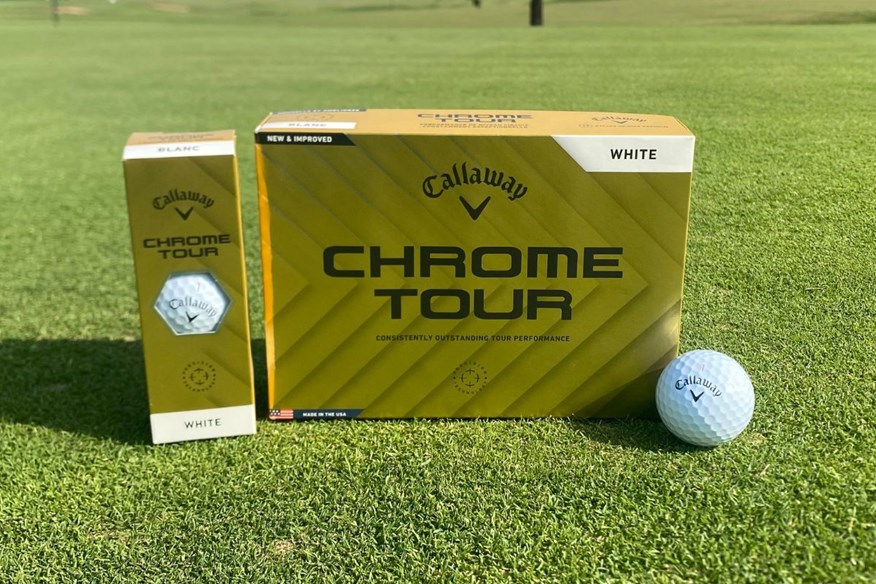

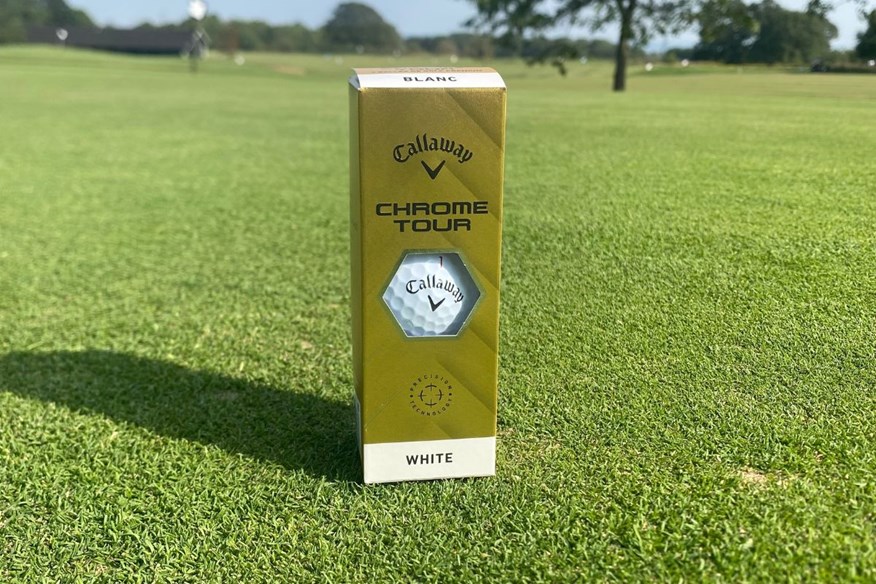
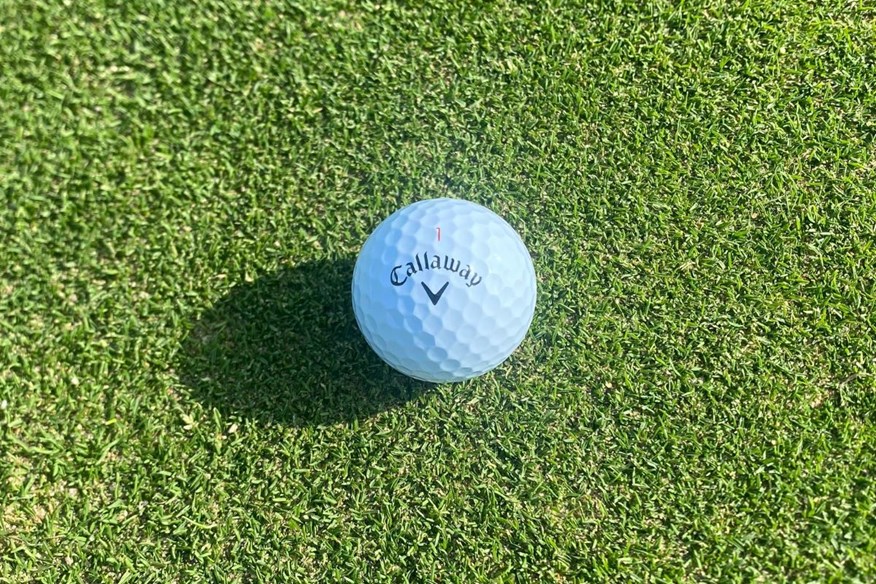

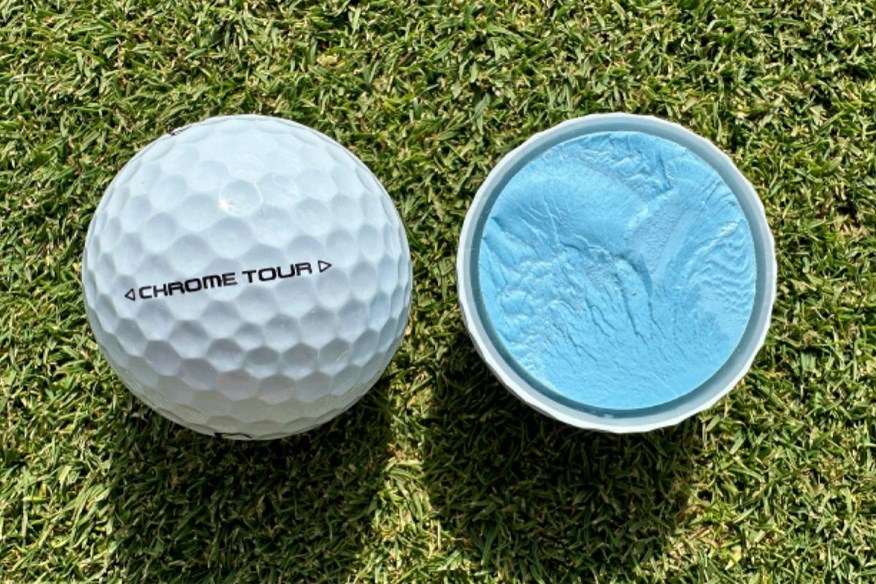
If you're looking to improve your tee game, the Callaway Chrome Tour is the ball you should choose out of all four-piece and five-piece golf balls.
At 114mph, the Callaway Chrome Tour is the fastest and longest golf ball of the entire test, being the only golf ball out of all 62 to exceed 275 carry yards. It's a similar story at 93mph, being the longest golf ball off the tee of all 62 tested.
Chrome Tour isn't as competitive with carry distance at slower swing speeds, but being lower spinning than other golf balls in this category helps to produce competitive total distance. Also, ball speed is joint-third fastest.
Where the Chrome Tour is low spinning off the tee, it's not the case approaching or playing around greens.
Chrome Tour is the complete package, and definitely a golf ball you have to consider if you want a premium, Tour-level golf ball that's fast and long off the tee, with good iron game and short game spin and control.
On-course verdict
I've had a lot of enjoyment playing with the Chrome Tour, most notably when I took this model out for a spin on The Old Course at St. Andrews. It's extremely difficult to find a negative considering it's long off the tee, high-spinning around the greens, and feels amazing.
This isn't a soft-feeling golf ball, but it's not firm either, it's somewhere in the middle, which is very pleasant because it offers great feedback as well as amazing feel.
The Chrome Tour is very strong off the tee, and it is noticeably longer than the Chrome Tour X on the course because it's not as high-spinning. The Chrome Tour is extremely popular on Tour, and it's clear to see why.
The Chrome Tour and Tour X are very closely matched, but the Chrome Tour is probably more versatile; it's just not as high-spinning when approaching and playing around greens.
Read our full Callaway Chrome Tour golf ball review.
Pros
- Impressive distance and ball speed
- Played by some of the best golfers in the game
- Very consistent golf balls
Cons
- Not as high-spinning as the Chrome Tour X
| Carry distance (yds) | Driver 114mph - 275.4 | Driver 93mph - 210.8 | Driver 78mph - 161.8 | 7-iron - 155.6 |
| Ball speed (mph) | Driver 114mph - 165.1 | Driver 93mph - 134.7 | Driver 78mph - 113.4 | 7-iron - 108.7 |
| Backspin (rpm) | Driver 114mph - 2,689 | Driver 93mph - 2,701 | Driver 78mph - 2,508 | 7-iron - 4,658 | Pitch - 6,036 |
| Launch angle (°) | Driver 114mph - 11 | Driver 93mph - 12.7 | Driver 78mph - 13.9 | 7-iron - 20.9 | Pitch - 30.1 |
| Descent angle (°) | Driver 114mph - 37.3 | Driver 93mph - 32.5 | Driver 78mph - 27.6 | 7-iron - 44.9 | Pitch - 35.2 |
| Peak height (yds) | Driver 114mph - 32.6 | Driver 93mph - 22.7 | Driver 78mph - 15.7 | 7-iron - 29.4 | Pitch - 6.5 |
| Compression (psi) | 113 |
- Hyper fast soft core
- Seamless Tour aero
- High-performance Tour urethane soft cover
- 332 dimples
- 4-Piece construction
- Available in white and yellow
- Alternative models include Triple Track, 360° Triple Track, TruTrack, and Limited Edition patterns
“From tee to green, the Wilson Staff Model is super consistent, and it ticks a lot of boxes for the majority of golfers,” Hogg explains. “Regardless of your ability or swing speed, the Staff Model will work for you if you want a golf ball that’s easy to control when playing into and around greens and competitive for distance off the tee.
“There’s a ton to like about the Staff Model, and its softer feel compared to the Staff Model X is sure to please a lot of golfers.”
Gold medal for tee to green performance at 114mph
The Wilson Staff Model is a very impressive golf ball that unfortunately sits in the shadow of the Staff Model X. That might sound harsh, considering this is the best golf ball for tee to green performance at 114mph in this category.
At the 114mph driver swing speed, this is the third-longest golf ball, and one of only three to exceed 274 yards in the entire test. At a moderate and slower swing speed, the Staff Model is a solid performer, but not as strong as the Staff Model X - third at 93mph and second at 78mph.
There is one area where the Staff Model outshines the Staff Model X, and that's with approach play. Staff Model scooped up the silver medal for approach play with the Staff Model X, one place behind in the bronze medal position.
Approaching and playing around the greens, the Staff Model doesn't generate as much spin as the Staff Model X, but its distance is more consistent. Despite being a lower-spinning golf ball, you might be able to trust the Staff Model more to carry a repeatable distance - even if it is shorter.
At quick swing speeds, this is definitely a good option if you want a golf ball that can do everything, but with the Staff Model X just behind at 114mph for tee to green performance, and given how it's better-performing almost everywhere else, it's hard not to recommend Staff Model X instead.
That being said, the best way to differentiate is if you want a lower-spinning, softer golf ball, go for the Staff Model.
On-course verdict
The Staff Model is a very strong performer from tee to green. If you don't want a high-spinning, firm-feeling golf ball, this is your best option. This model isn't as impressive as the Staff Model X, but it's pretty darn close.
From tee to green, the Staff Model is super consistent, and it ticks a lot of boxes for the majority of golfers. Regardless of your ability or swing speed, the Staff Model will work for you if you want a golf ball that's easy to control when playing into and around greens and competitive for distance off the tee.
There's a ton to like about the Staff Model, and its softer feel compared to the Staff Model X is sure to please a lot of golfers.
Read our full Wilson Staff Model golf ball review.
Pros
- Incredible distance off the tee
- Amazing short game performance
- Softer feel will be appreciated by many golfers
Cons
- Overall performance is just below that of the Staff Model X
| Carry distance (yds) | Driver 114mph - 274.3 | Driver 93mph - 209.2 | Driver 78mph - 161.7 | 7-iron - 156.3 |
| Ball speed (mph) | Driver 114mph - 164.7 | Driver 93mph - 134 | Driver 78mph - 113.3 | 7-iron - 109 |
| Backspin (rpm) | Driver 114mph - 2,829 | Driver 93mph - 2,703 | Driver 78mph - 2,595 | 7-iron - 4,653 | Pitch - 5,993 |
| Launch angle (°) | Driver 114mph - 11.2 | Driver 93mph - 12.8 | Driver 78mph - 13.9 | 7-iron - 21.1 | Pitch - 30.6 |
| Descent angle (°) | Driver 114mph - 38.6 | Driver 93mph - 32.4 | Driver 78mph - 28 | 7-iron - 45.2 | Pitch - 35.8 |
| Peak height (yds) | Driver 114mph - 34.1 | Driver 93mph - 22.5 | Driver 78mph - 15.8 | 7-iron - 29.8 | Pitch - 6.8 |
| Compression (psi) | 112 |
- V-Cor advanced performance
- Medium compression core with velocity-boosting additive
- 3SIX2 seamless urethane cover
- 362 dimples
- 4-Piece construction
- Available in white and yellow
Still not sure which ball you should play? Check out:
